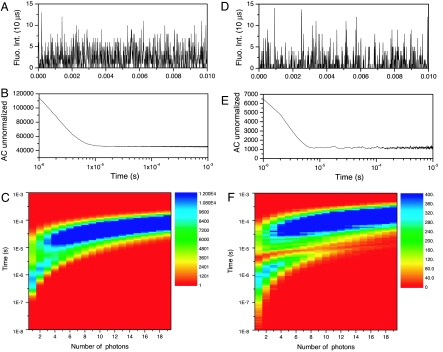Fig. 3.
Short-lived dark state directly observed through protein bunching. (A) Fluorescence intensity trajectory of a single IR-emitting C12–Agn molecule in 10-μs time bins. (B) Autocorrelation of the data depicted in A. (C) PAID histogram of the data depicted in A. (D) Simulation of fluorescence intensity trajectory of a single molecule, using the same photophysical parameters as obtained from fitted data of the molecule depicted in A, binned in 10 μs. (E) Autocorrelation of the data depicted in D. (F) PAID histogram of the data depicted in D. Triplet modulation of the singlet emission can only be seen upon spreading correlations along an axis giving the numbers of photons between each correlated pair, which uniquely enables bunching to be observed with a single detector at much longer times. Experimental and simulated emission traces show nearly identical features.

